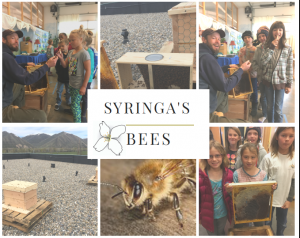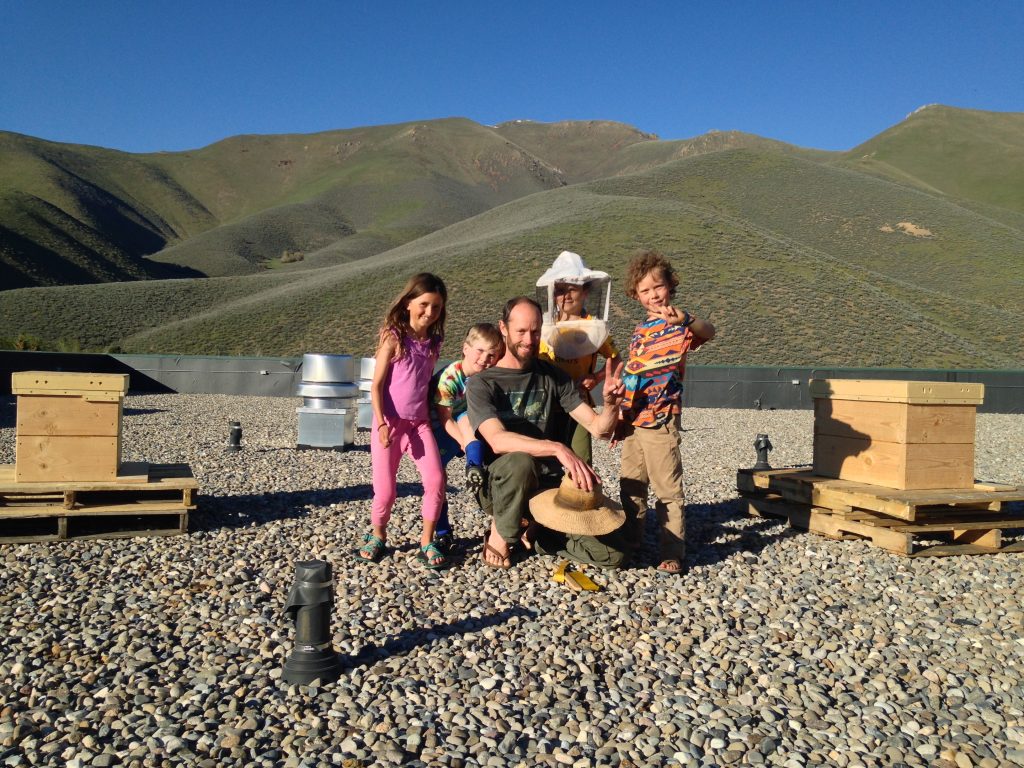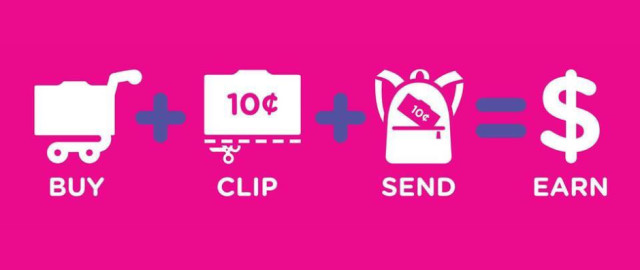Students from the Syringa Mountain School in Hailey threw clay for a good cause on Dec. 11, making dishes for The Hunger Coalition’s Empty Bowls fundraiser next month. On Jan. 14, the handmade bowls will be filled with scratch-made soups, chili, salads, breads and desserts donated by local chefs and caterers. Sold for $20 apiece, the bowls raise money to help fight hunger in the Wood River Valley. With the help of Boulder Mountain Clayworks, guests will have more than 300 locally made bowls to choose from, including a handful made by the grade-schoolers from Syringa charter school. “We were so thrilled to have an opportunity to take part in an event that brings arts and education together with so many great valley organizations,” said Julie Evans, student support coordinator at the school. “It feels like the true spirit of giving!”
Category: news
Bees Arrive at Syringa Mountain School
2017-2018 School Calendar
School Closure Information
School closures may occur due to extreme weather conditions. For guidelines on school closure, please click here.
The Tax Advantages of Giving to Idaho Schools: 63-3029A
63-3029A. INCOME TAX CREDIT FOR CHARITABLE CONTRIBUTIONS — LIMITATION. [EFFECTIVE JANUARY 1, 2020] At the election of the taxpayer, there shall be allowed, subject to the applicable limitations provided herein, as a credit against the income tax imposed by chapter 30, title 63, Idaho Code, an amount equal to fifty percent (50%) of the aggregate amount of charitable contributions made by such taxpayer during the year to a nonprofit corporation, fund, foundation, trust, or association organized and operated exclusively for the benefit of institutions of higher learning located within the state of Idaho, including a university related research park, to nonprofit private or public institutions of elementary, secondary, or higher education or their foundations located within the state of Idaho, to Idaho education public broadcast system foundations within the state of Idaho, to the Idaho state historical society or its foundation, to the council for the deaf and hard of hearing, to the developmental disabilities council, to the commission for the blind and visually impaired, to the commission on Hispanic affairs, to the state independent living council, to the Idaho commission for libraries and to public libraries or their foundations and library districts or their foundations located within the state of Idaho, to the Idaho STEM action center, to nonprofit public or private museums or their foundations located within the state of Idaho and to dedicated accounts within the Idaho community foundation inc. that exclusively support the charitable purposes otherwise qualifying for the tax credit authorized under the provisions of this section.
What is the Winter Spiral Walk?
What is the Spiral Walk?
During the Spiral Walk, we celebrate the turning point in the year when the days become their shortest and the night its longest and we look for the light which comes from within. In the center of the spiral, a single candle is lit. Each child walks the spiral alone to the center of the spiral, where they light their own candle to place along the spiral. When all the children have walked the path, the whole spiral is aglow with lights.
The Spiral Walk
HISTORY
The spiral walk is a festival that is practiced in most Waldorf schools on or near the winter solstice. The tradition honors the seasonal cycle of light and darkness by arranging a simple spiral labyrinth walk. Everything about the spiral walk is rooted in symbolic meaning: from the form of the spiral to the red apples, evergreen boughs, beeswax candles, and the objects placed in the spiral.
SYMBOLISM
THE SPIRAL is one of nature’s many patterns and can be found in shells, flowers, pinecones, fingertips, and galaxies. In this festival honoring the return of light into the world, we use the spiral to represent the seasonal rhythms as well as representing the contemplative journey we take to find our own inner “light.” The physical form of the spiral represents the celestial marking of the seasons. The beginning of the path marks the summer solstice. As we spiral inward through the labyrinth, it represents moving towards and through autumn, where the days grow shorter. The very center of the spiral symbolizes winter solstice: the darkest time of the year. Here we pause at the center before we spiral back outward through spring toward the summer solstice.
Each child’s journey through the spiral also represents an inner journey to find his or her own “light” within. In the very center of ourselves, we discover our own beauty, strength, insight, and gifts that we offer the world. We then turn from this discovery within and carry our gifts of radiance back out into the world.
RED APPLES are often used as candle holders during spiral walks and celebrations. Inside the fruit lies the seed, waiting patiently in darkness until the time comes to sprout. The apples represent the seeds of our hidden potential. We don’t yet see the fruit of our labors with the students… but within each is the seed of the adults they will become.
EVERGREEN TREES are found in many myths, often representing the tree of life. These are the trees that weather the winter without going dormant. They represent the regenerative power of life, nature, and the seasons. We use evergreen boughs to represent the sustaining abundance of life on our planet.
BEESWAX CANDLES in Chinese culture are considered a symbol of eternal love and warmth. We use them as our light source in the darkness to symbolize that love is eternally present.
KINGDOMS OF NATURE; We celebrate the diversity of life on our planet by placing among the evergreen boughs objects representing nature’s kingdoms: mineral, plant, and animal. Crystals, seashells, feathers, pinecones, berries, oranges, and apples will be resting along the path.
Syringa 2024 Spiral Walk
Thursday, December 19th
SCHEDULE
Kindergarten: 5:00 PM
1st grade: 5:30 PM
2nd grade: 6:15 PM
3rd grade: 6:45 PM
ARRIVAL AND SEATING:
Please arrive just before the scheduled start time for your child’s grade. There will be a helper at the front door making sure the previous group is finished before your group enters the Heart Space. Spiral Walk is an inward festival, so entering the building in a calm and quiet manner will help the children find the right mood. Children will find seats along the west wall of the Heart Space (by the Farm and Garden classroom). Your child’s teacher will be there to greet them and help them find their assigned seat. Friends and family can find seats along the east side of the Heart Space.
PHOTOGRAPHY:
We respectfully request that you refrain from taking any photographs or videos during the Spiral Walk.
DRESS:
There will be multiple candles in and around the spiral, so for safety purposes no long or overly loose dresses. If your child is wearing a tie, be sure it is tucked into a vest or held tight to the shirt in some manner. Hair is best pulled back.
DEPARTURE:
When the walk is over you can exit the building through the South East door. Your child will receive his/her candle, put on their coat, and meet you on the pavement section of the play area.
GENERAL EXPECTATIONS:
Please remind your child that this is a contemplative evening. Quiet voices and respectful behavior are the expectation. During the walk there will be instrumental music and choral music. Please add your voice to the song!
Box Tops for Education – Earn Money for SMS!
Clipping Box Tops is an awesomely easy way to raise money for your kids’ school
Box Tops for Education was started by General Mills in California back in 1996, after the company decided they wanted to create a program to help support education and benefit America’s schools.
The program was such a huge success that it soon expanded across the nation, and by 1998, more than 30,000 schools were clipping Box Tops and earning cash to buy the things they needed, like books, computers, playground equipment and more, according to the Box Tops for Education website. Today, America’s schools have earned over $719 million, and you can find Box Tops on a ton of products you buy everyday at the grocery store.
You can start by clipping the Box Tops off of approved products you already have in your pantry. You don’t need to clip the actual product UPC, just the Box Tops logo will do. From frozen foods to produce and household cleaning products, there are literally hundreds of opportunities to help, and each Box Top is worth 10 cents. Doesn’t sound like a lot, but it totally adds up quick.
Participating companies and product lines include General Mills, Green Giant, Totino’s, Pillsbury, Old El Paso, Ziploc, Hefty, Juicy Juice, Betty Crocker and many more.
Get the full list of approved products here.
Once you’ve got a good amount of Box Tops, you can download a collection sheet, stick the Tops on the sheet, and send them to school with your child. Most collection sheets hold 10 to 25 Tops, and volunteer coordinators appreciate that you send your Tops to school in bundles of 50.
Download a collection sheet here.
Once you send the collection sheet to school, they will be rounded up by a volunteer coordinator who runs your local Box Top program.
You don’t have to limit the giving to your household. You can make a Box Tops for Education collection box and leave it at your work, church or community center. Make a small sign letting people know where to find Box Tops for Education and what they provide. Schools also have Box Top collection contests, so you can ask local businesses if they’d be willing to donate gift cards as prizes. If you get your whole community involved, you’ll be making money for your school in no time.
source: http://www.sheknows.com/living/articles/837511/what-is-box-tops-for-education
Winter Temperature & Weather Guidelines
As it’s getting colder outside, please review our guidelines for students who arrive prior to school start at 8:00am. These guidelines are also used for recess time during the day.
A gentle reminder that we offer supervision outside from 7:45am – 8:00am. Parents may drop off children earlier at their own discretion – understanding that supervision does not occur until 7:45am. School starts at 8:00am.
Winter Temperature Guidelines:
Temperature is monitored by the main office.
- If temperature is 20 degrees or above, all students are to be outside. Exceptions are for students who have a note from either a doctor or parent. Teachers are to retain these notes and let the person on duty know which students have permission to stay in. If a student has permission to stay in, they are to find a spot at a table in the Heart Space and work quietly on homework, have breakfast, read or have other quiet activities to do.
- If temperature is between 0 degrees and 19 degrees, then students have a choice of being inside or outside. When students choose to beinside, they are to be either in the Heart Space at a table/seat or in the classroom with teacher approval. Students are to bring something to do during these times. Reading, coloring, and drawing are some activities they may choose to do while in the Heart Space. Students are to follow common space quiet time rules when in the Heart Space and/or classroom. When students choose to be outside, they need to wear a hat/earmuffs, coat and gloves.
- If temperature is below 0 degrees or rain inhibits sight and creates muddy conditions beyond safety, all students are to be inside. Students may be in the Heart Space or classroom during this time.




